
ANAK KRAKATAU, Indonesia-Sending a boom across the bay, the offspring of the fabled Krakatoa volcano unleashes another mighty eruption, blasting smoke and red-hot rocks hundreds of feet into the sky.Even on its quiet side, the black sand on the now-forbidden island is so hot that a visitor can only briefly set foot on it.This week's display by Anak Krakatau-or "Child of Krakatoa"-is impressive, yet it is a mere sneeze when compared to the blast in August 1883 that obliterated its "father" in the most powerful explosion in recorded history.
• Click here for a Krakatoa photo essay.That blast was heard as far away as 2,500 miles and choked the atmosphere with ash and dust, altering weather patterns for years. Some 36,000 people were killed in the eruptions and ensuing tsunamis.Now the 985-foot peak growing from the ocean where Krakatoa once stood is erupting, one of several Indonesian volcanoes that have roared to life in recent weeks.They illustrate the awesome seismic forces at work deep below the surface of this island nation.No lives have been lost in the latest round of activity, but thousands of villagers have been evacuated from the slopes of Mount Kelud on eastern Java island. On Thursday, its alert status was dropped a level, meaning it is still dangerous, but residents can return home.Indonesia's history is studded with seismic events. The 2004 Asian tsunami was spawned by a monster quake off the west coast, which sits at the intersection of three tectonic plates that form one border of the "Pacific Ring of Fire."The plates — each moving at about the speed a fingernail grows each year — slide against or under each other, allowing molten rock from the Earth's mantle to break the surface via a volcano, or create energy released in an earthquake.The country's 17,000 islands are home to about 70 active volcanoes, the most in the world.Twenty of them are on Java, an island roughly the same size as Mississippi, home to more than half of the country's 235 million people.With demand for farmable land at a premium, many people choose to live within the shadow of the volcanoes because of the rich volcanic soil that is especially good for crops."We have lived here for generations. The land is my life," said Meseman, a 74-year-old papaya farmer on the slopes of Mount Kelud, who like many ethnic Javanese uses only a single name and declined to heed the warnings to leave the area. "It is impossible for me leave. If anything, the volcanic ash will make my fields more fertile."The cataclysmic eruption of Krakatoa — which actually lies west of Java in the Sunda Strait, contrary to the title of the popular 1969 movie, "Krakatoa, East of Java" — followed several months of gradually increasing activity.Anak Krakatau rose from the sea in 1930 and has been growing ever since.Visitors can reach the island in about two hours by motor boat from the northern coast of Java, which is a 2½-hour drive from Indonesia's capital, Jakarta. When it is quiet, it is a short, but steep walk to the top of the sandy peak.When Anak began erupting last week, officials declared a no-go zone of about two miles. But the captain of a boat agreed to take an Associated Press reporter and photographer to Anak, briefly landing on the side of the volcano that was not erupting.The ground was hot and appeared to vibrate beneath the pumice stone, a volcanic rock that floats on water.Despite the history of its father, Anak is not considered especially dangerous — for now.It has settled into a pattern of a gentle eruption every seven or eight years, scientists said."Maybe in hundreds of years it will blow, but I will be long gone by then," said Cahya Patria, among the scientists at the Center for Vulcanology and Geological Hazard Mitigation who keep watch on the mountain from a hill on the mainland.Anak Krakatau is only just visible from their station, so the staff members monitor it with a seismograph and an array of other equipment installed on its slopes, including a camera that takes photos posted on the center's Web site.As the volcano keeps up a steady stream of thunderous explosions, scientists at the station log each eruption and its intensity.Visitors to Anak from Jakarta normally pass through the resort towns of Anyer and Carita, which were devastated by the series of tsunamis triggered by the 1883 eruption.There are few signs of that horror, aside from the foundations of a Dutch-built lighthouse that was scythed down by the sea.The park where its replacement now stands is a popular meeting point for young lovers, who sit on benches straining to catch a glimpse of Anak Krakatau as it billows mushroom clouds of smoke into the sunset.While most Indonesians are Muslims, many also follow pre-Islamic animist beliefs and worship ancient spirits.Often at full moons, people trek to crater rims and throw in rice, jewelry or live animals to appease the volcanoes."The Javanese see nature as a friend because it gives then food and life," said Bagong Suyanto, a professor of rural sociology at the University of Surabaya. "They trust it, they do not see it as a threat like volcanologists do."
As in the days of Noah....
 Wellington - A strong earthquake measuring 5.6 on the Richter scale rattled thousands of mid-summer holidaymakers at the New Zealand North Island lakeside resort town of Taupo on Saturday morning.Seismologists at GNS Science said the quake was centred 20km from Taupo and 250km south-east of Auckland.Recorded at a depth of 80km below the surface, it was widely felt in the North Island.There were no immediate reports of damage or casualties.The shake followed a 5.5 tremor in the same region on Thursday and a massive quake measuring 6.8 on December 20 which did considerable damage in the east coast port town of Gisborne.
Wellington - A strong earthquake measuring 5.6 on the Richter scale rattled thousands of mid-summer holidaymakers at the New Zealand North Island lakeside resort town of Taupo on Saturday morning.Seismologists at GNS Science said the quake was centred 20km from Taupo and 250km south-east of Auckland.Recorded at a depth of 80km below the surface, it was widely felt in the North Island.There were no immediate reports of damage or casualties.The shake followed a 5.5 tremor in the same region on Thursday and a massive quake measuring 6.8 on December 20 which did considerable damage in the east coast port town of Gisborne.
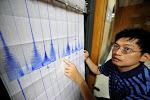
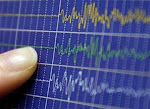
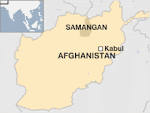






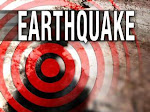
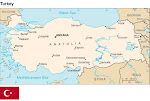
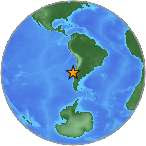




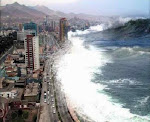

.jpg)


.bmp)

























 WASHINGTON-Yellowstone National Park, once the site of a giant volcano, has begun swelling up, possibly because molten rock is accumulating beneath the surface, scientists report.
WASHINGTON-Yellowstone National Park, once the site of a giant volcano, has begun swelling up, possibly because molten rock is accumulating beneath the surface, scientists report.




